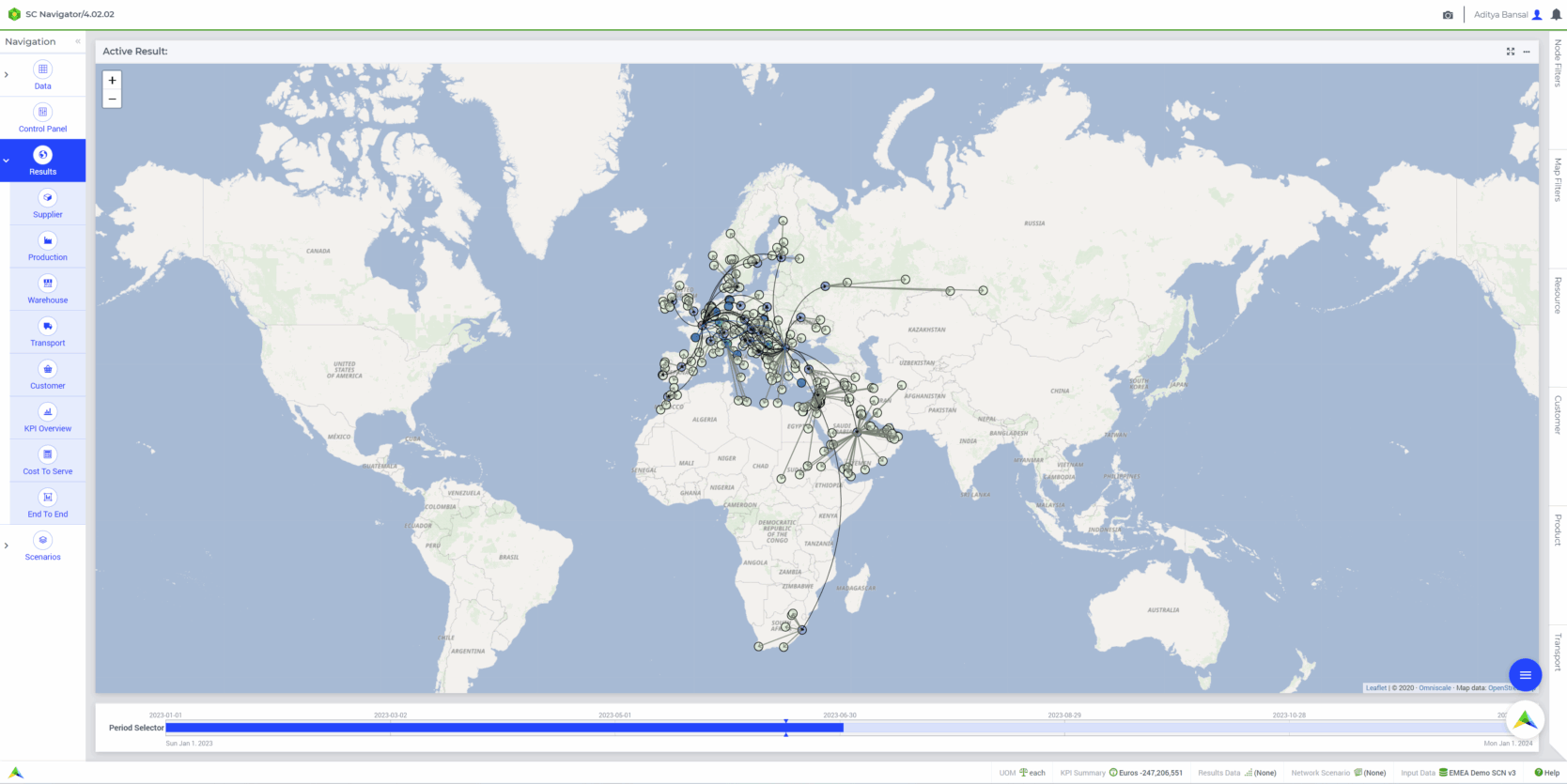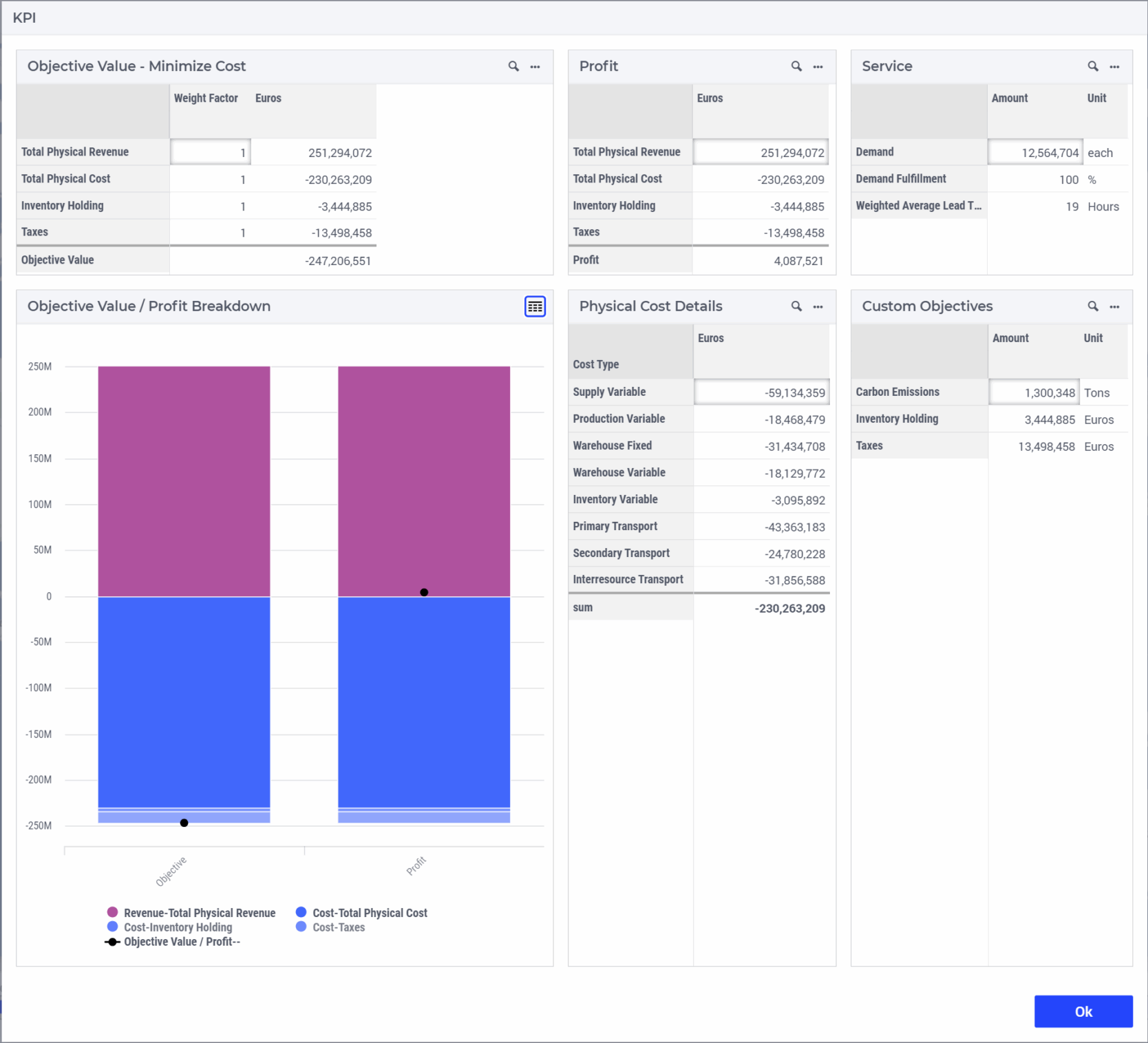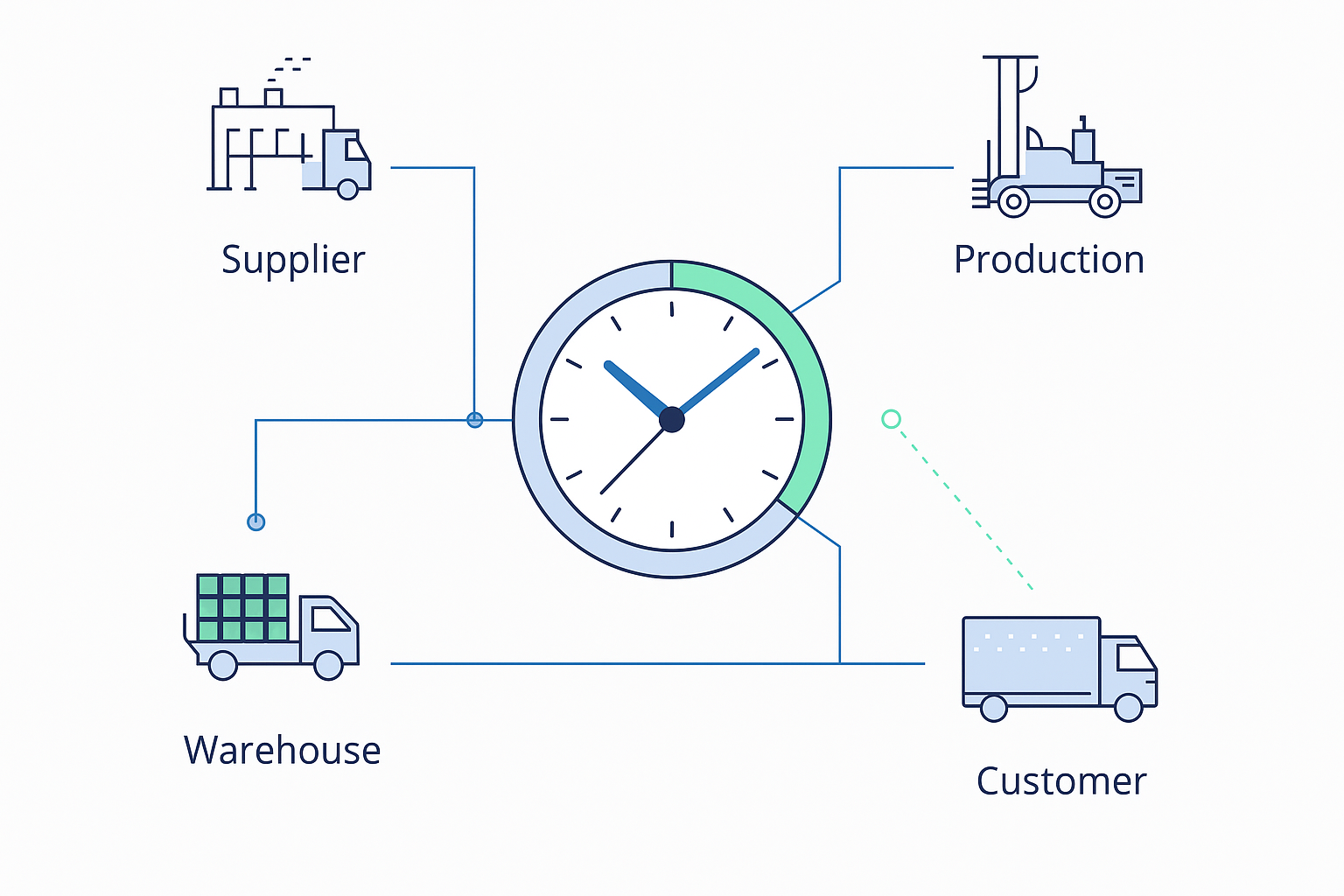Effectively communicating the return on investment (ROI) of supply chain network design projects is essential for securing executive buy-in, justifying technology investments, and demonstrating the strategic value of supply chain optimization. While the technical benefits of network design are often clear to practitioners, articulating these gains in business terms that resonate with senior stakeholders requires a structured approach.
Proof of value from Supply Chain Network Design projects
First, do we have any evidence that prove supply chain network design project results? Don’t take my word for it.
Let’s look into a relatively new study that analysed a significant data sample: The value of supply chain network design: Empirical evidence from the process industry, European Journal of Operational Research, 2023.
Their key findings:
- Empirical Quantification: The study provides empirical evidence from the process industry, demonstrating that supply chain network design projects deliver substantial, measurable value. Companies that systematically redesign their supply chain networks see significant improvements in both cost efficiency and service levels.
- Financial Impact: The research quantifies cost savings in the range of 5–15% of total supply chain costs following network redesign initiatives. These savings are realized through optimized facility locations, improved transportation flows, and better inventory positioning.
- Strategic Advantages: Beyond cost, network design projects also yield strategic benefits, such as increased flexibility, improved risk mitigation, and enhanced ability to respond to market volatility. These advantages are particularly valuable in industries facing frequent demand and supply disruptions.
Our ROI Communication Framework
By following these steps, supply chain leaders can effectively quantify and communicate the full strategic value of network design projects, ensuring executive buy-in and sustained organizational support.
- Define and Prioritize Strategic KPIs
Start by identifying the key performance indicators (KPIs) that matter most to your business and its executive stakeholders. These should go beyond operational costs to include metrics such as:
- Service levels (e.g., on-time delivery, lead time reduction)
- Customer satisfaction
- Supply chain resilience and risk mitigation
- Sustainability (e.g., carbon footprint, ESG targets)
- Asset utilization and capital efficiency.
Assign weights to each KPI based on its strategic importance to the organization. This ensures that your analysis reflects what the business truly values, not just what is easy to measure.
- Link Value to Strategic Objectives
Clearly tie network design outcomes to the company’s strategic goals:
- How does the redesign support growth, market expansion, or risk mitigation?
- Does it enable faster response to market shifts or regulatory changes?
- Can it help achieve sustainability or digital transformation targets?
Frame your findings in the context of the executive agenda, not just supply chain metrics.
- Establish a Clear Baseline
Begin by defining the current state of your supply chain network. This involves collecting data on costs (transportation, warehousing, inventory), service levels, lead times, and other key performance indicators (KPIs). Establishing this baseline is critical, as it provides the reference point against which improvements and ROI will be measured. You can easily set this up in AIMMS SC Navigator.

- Quantify the Benefits
Network design projects deliver value in several measurable ways:
- Cost Reduction: Typical projects can yield logistics cost savings in the high tens of millions for large, logistics-intensive businesses, with impacts often equivalent to 1% of annual revenue following significant network changes.
- Service Level Improvements: Optimized networks can reduce lead times and enhance customer satisfaction, which can be tracked through improved on-time delivery rates and reduced stockouts.
- Asset Utilization: Better network design leads to more efficient use of fixed assets, reducing the risk of under- or over-utilization as volumes fluctuate.
- Risk Mitigation: Scenario modeling can identify vulnerabilities and help design more resilient networks, reducing the potential impact of disruptions.
- Calculate ROI with Standard Metrics
Use established financial metrics to express the value of your project:
- ROI Formula:
Net Benefit = Total quantifiable benefits (e.g., annual cost savings, increased revenue, reduced risk costs) minus the total project costs (software, implementation, change management).
- Payback Period: The time required for the benefits to cover the initial investment. For example, our data shows that large enterprises can achieve full payback within the first quarter of use.
- Net Present Value (NPV): Discount future benefits and costs to present value, providing a more comprehensive long-term view of project viability.
Ground your communication in practical, relatable examples:
“A $7.5B business using network optimization software achieved full payback within the first quarter, with benefits reaching high tens of millions in savings. For businesses above $500M in annual revenue, the investment is typically justified by these substantial returns.”
Such case studies make the ROI tangible and credible for executive audiences.
- Summarize with Actionable Insights
Use visual tools to summarize cost savings, service improvements, and risk reductions, making complex data accessible and compelling. Also, consider showing before-and-after scenarios or alternative network designs to highlight the incremental value of the project. AIMMS
SC Navigator is built for this!

End your communication with a clear summary:
- Expected ROI: (e.g., “Projected annual savings of $10M, payback in 3 months, ROI of 300%.”)
- Strategic Impact: (e.g., “Enables 20% faster market entry, 15% reduction in lead times, and improved resilience to supply disruptions.”)
- Next Steps: Outline the path to implementation and ongoing value tracking.
Conclusion: Turning Network Design into a Strategic Business Case
Supply chain network design is no longer just a technical exercise—it’s a strategic lever with measurable financial and competitive impact. By following a structured ROI communication framework, supply chain leaders can bridge the gap between operational detail and executive relevance. Whether it’s millions in logistics savings, faster market entry, or stronger resilience to disruption, the value is real, repeatable, and supported by both empirical research and real-world results.
The challenge isn’t in proving the impact—it’s in telling the story in a way that drives decisions. When you align outcomes with strategic goals, quantify benefits with credibility, and tailor your message for your audience, you transform a complex initiative into a compelling business case.
In today’s volatile environment, the organizations that master this communication are the ones that get funded, get prioritized, and ultimately, get ahead.
Curious to explore more on how to reach ROI with supply chain design projects and share them with the wider team? Ask our optimization experts today.





